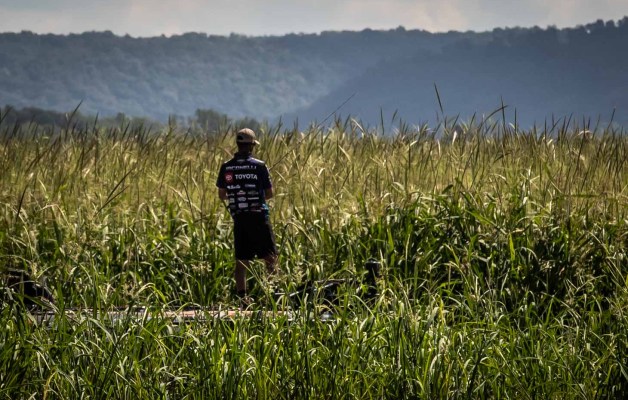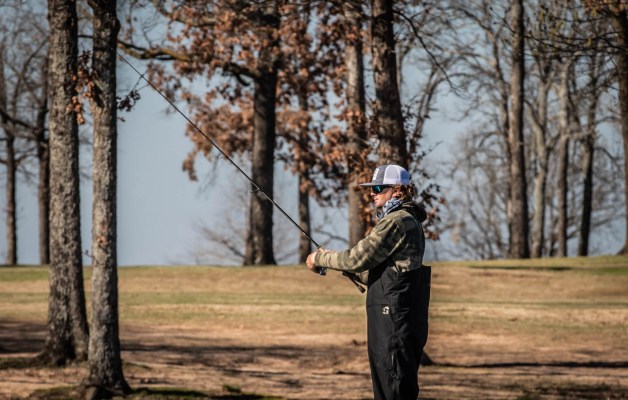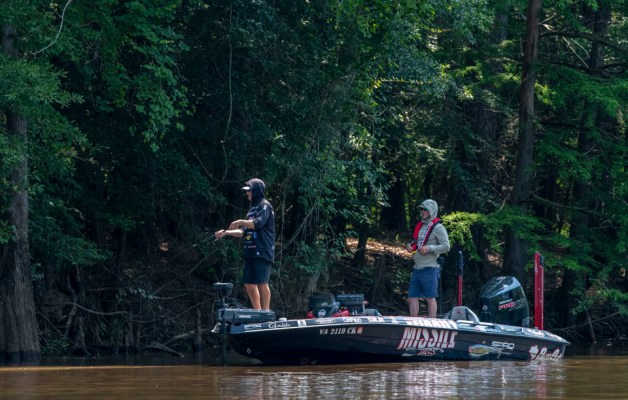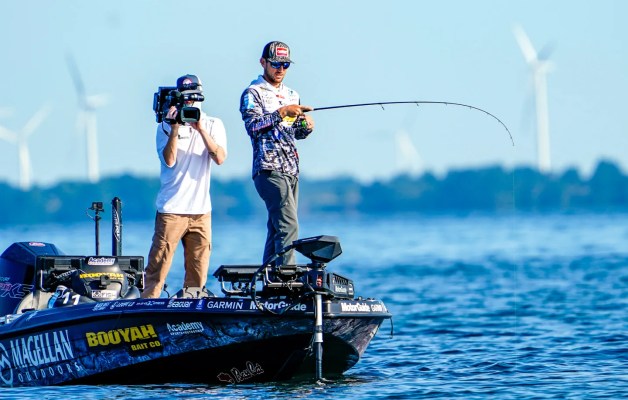From Alaska to Florida and Maine to New Mexico, fishing holes of all kinds are waiting for you. All you have to do is know how to find them, and if they’re on private property, know how to gain permission to fish them.
Here are some tips to get you started:
Ask around
Probably the quickest and best way to find fishing holes is to ask those who might know about them. Start with relatives, neighbors, teachers, coaches and ministers. If they don’t fish locally, ask if they know someone who does.
Even better than telling you where the fishing holes are, some adults might take you.
“Often adults will not think to invite kids but gladly will take them and teach them if asked,” says Jim Martin, conservation director of Pure Fishing.
Ask about fishing holes at local tackle shops and sporting goods stores. Call city hall to find out if your town has a municipal lake or two. Many of them do. Don’t forget to ask if you must obtain a permit before fishing at a city lake.
Ask your local wildlife officer to tell you about local lakes and streams that you can fish. You can find his phone number by checking under the name of your state (“Missouri, state of,” for example) in the white pages of the telephone directory, or just log on to your wildlife agency’s Web page for contact information.
If you live in or near a metropolitan area, chances are good that your city has an urban fishing program. A wildlife officer or city official can tell you about that as well.
Minneapolis-St. Paul, for instance, offers a “Fishing in the Neighborhood” program in a seven-county area. Many of the lakes are accessible by bus, bicycle or even by walking.
Listed in the phone book under “U.S. Government,” local offices of federal agencies also can direct you to fishing holes. If their offices are nearby, check with the U.S. Forest Service or the National Resource Conservation Service, among others.
Go online
In addition to asking about fishing holes in person or by telephone, check on the Internet. One option is to use the Google search engine (www.google.com) for fishing information about your local area, but also check out the Web sites for the Future Fisherman Foundation (www.futurefisherman.org) and Take Me Fishing (www.takemefishing.org).
“The Future Fisherman Web site lists contact information under the Resource Yellow Pages, so youth and parents should be able to call the state aquatic educator for fishing holes in a particular community,” says Laura Jerome, assistant director of the Future Fisherman Foundation.
Take Me Fishing (TMF) will also help you locate fishing holes. Just click on “Places to Boat and Fish,” and follow the directions. In addition, TMF is compiling an “Urban Fishing” section that will offer details about city fishing holes from coast to coast.
TMF can also help you find a guide or a rental boat, and it provides information about clubs and events, as well as fishing basics.
Be an explorer
If you have a driver’s license, a car, gas money and an adventurous spirit, cruise the back roads of your county looking for public access sites near public roads to streams and rivers.
Before you go, you’ll want a map, and the more detailed it is, the better. In general, highway maps aren’t specific enough. A topographic, or “topo,” map would be your best bet.
The United States Geological Survey (USGS) has mapped every inch of the country and subdivided one large map into more than 55,000 small ones, with each of the latter covering an area of about 7 1/2 square miles. Water is depicted in blue, while forests are green, cities are red, and roads are both black and red. Thin brown lines show contours.
You can buy a topo of the area that you want to explore at http://topomaps.usgs.gov. The cost is $6 for a map plus $5 for shipping and handling.
Other good map sites include www.mapmart.com and http://geography.about.com/cs/topographicmaps.
Wherever you get your map, remember that not all waters shown are open to the public. Many are privately owned. Always ask permission before stepping onto private land.
Fish with others
Yet another way to find fishing holes is to join a club or organization. You’ll not only learn about local fishing holes but make new friends as well.Some groups, such as the scouting organizations and 4-H, include fishing in their activities but are not focused solely on that.
Others are. Many BASS clubs (www.bassmaster.com), for example, sponsor junior clubs that emphasize bass fishing and bass conservation. Also, some schools offer after-school fishing clubs.
If yours doesn’t, why not see about starting one? Find a teacher who likes to fish, and ask him or her to help you.
Fishing with others will also help you to improve your skills. You may be a terrific plastic worm fisherman, but you might need some help with spinnerbaits or crankbaits. A good fishing partner will make you a better angler and help you to have a better time on the water.
Have you ever heard the saying: “Two heads are better than one”? Well, it’s true — especially when you’re fishing. Two anglers can figure the fish out faster and try different lures and techniques faster until the best methods are found. Team up for better fishing.
Private waters
Chances are good that some of the waters you find will be privately owned, but chances are also good that you can fish these places if you ask politely and are respectful of the owner’s property. Follow these guidelines provided by TMF:
Ask permission
1. Meet the owner face to face, preferably during daylight hours. If no one is outside, it’s OK to knock on the door. Don’t go inside unless a parent is with you or has allowed you to do so.
2. Be courteous as you introduce yourself and ask for “just a minute” of time.
3. Tell the landowner that you like to fish and would like permission to fish on his property.
4. Don’t take it personally if you are turned down. If permission is given, ask if now is a good time to discuss details. If it’s not, set up a time.
Establish rules
1. Ask if there are areas where the landowner does not want you to go.
2. Find out if you must call ahead before you go fishing or if you can simply let the owner know when you arrive at his place.
3. Ask if he prefers that you fish certain hours or days of the week.
4. Discuss where you should park, where to go through gates or cross fences, and if it’s all right to go through fields and between buildings.
5. If you ask to bring a friend, emphasize that you do not intend for that person to then come on his own.
6. Learn what kinds of fish are present and what the rules are. Is fishing to be catch-and-release only or can certain numbers and sizes be kept? Does the landowner prefer that you not release some sizes and species?
Be respectful
1. Leave the property better than you found it. Don’t leave trash or discarded fishing line, and pick up whatever someone else might have left behind.
2. Leave gates exactly as you found them.
3. If keeping fish is allowed, ask the landowner if he would like some fish to eat, too.
4. If you see the landowner outside, thank him for allowing you to fish and report on what you’ve caught.
5. At the end of a fishing season, stop by to thank the landowner personally, and tell him that you’ll check back with him to see about fishing next year.
6. Send a thank you note, as well as a card during the holiday season.





